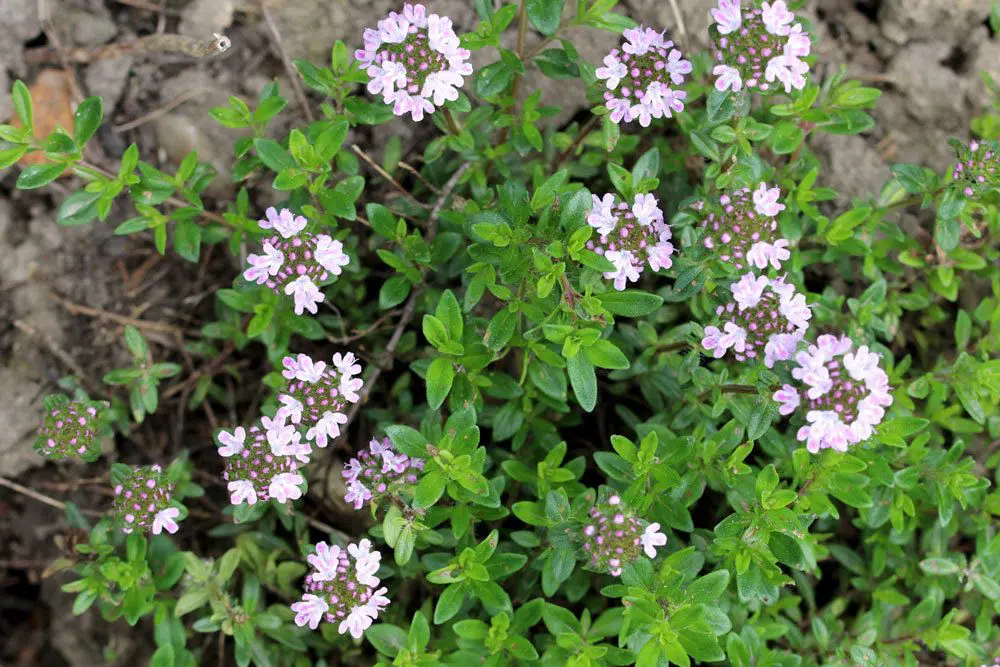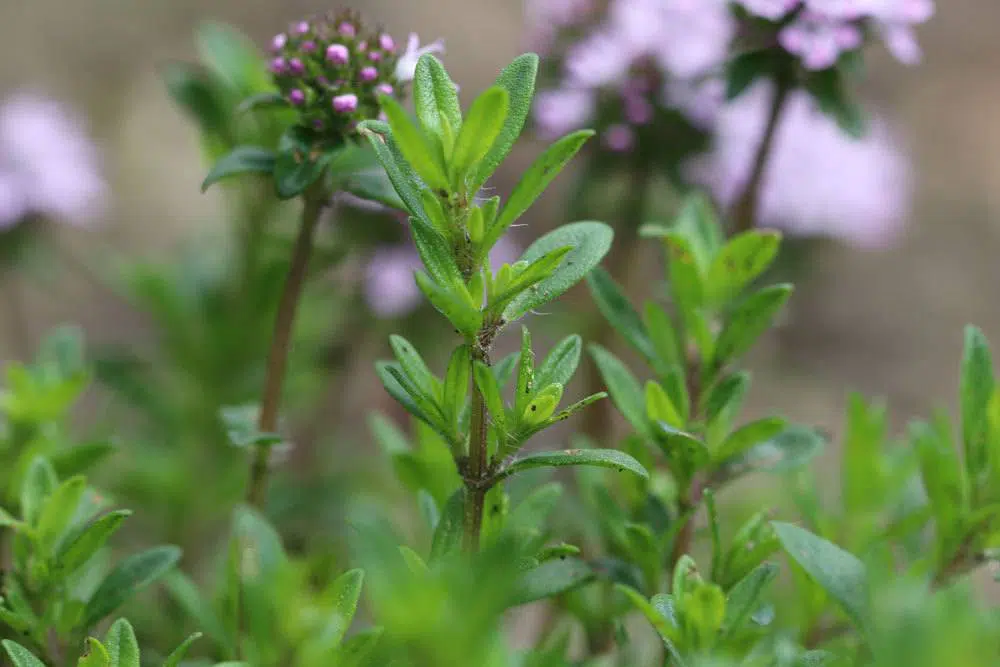Last updated on October 23rd, 2023 at 08:34 pm
Thyme is a popular addition to the herb garden – but is it also hardy? Unfortunately, there is no blanket answer to this question, because cultivation and variety determine how the plant reacts to sub-zero temperatures. Therefore, some factors must be taken into account when wintering. Especially if the plant is to remain outdoors. Whether protection is necessary and how it should be designed, decide climate and variety.
Contents
Winter hardy varieties
If you want to leave your thyme – or Thymus, as it is also known – outdoors all year round and protect it as little as possible in the winter, you should choose a variety that is hardy or has a high frost tolerance.
These include:
- Sand thyme to -30 °C
- Cushion thyme and Cascade thyme each to -28 °C
- True thyme, fragrant thyme and field thyme, each down to about -22 °C
Unless these varieties are planted in a particularly harsh climate or severe temperature drops are to be expected, they hardly need any protective measures during the winter. Only the location should be optimally adapted to the needs of the plants.
This includes for successful cultivation and appropriate overwintering:
- Sufficient light: at least four to six hours a day should be shone on the thymus in the summer. In winter, it should also not be placed completely in the shade, as it is an evergreen plant that requires light.
- Reduce temperature fluctuations: Hardy Thymus species are less disturbed and weakened by frost and more by temperature fluctuations. Therefore, a very exposed location is unfavorable for successful overwintering. Likewise, cultivation in planters smaller than 30 centimeters in diameter is not recommended.
- No waterlogging: The roots of thyme suffer quickly if they are in too moist soil or even exposed to waterlogging. However, this can happen quickly even in rather dry areas during the fall and winter. In addition to a dry location and adequate drainage, protection from precipitation should also be provided in rainy areas. Suitable for this purpose is, for example, coniferous brushwood, which is distributed around the thymus.
- Avoid marjoram: If marjoram and thyme are planted close together, they will hinder each other’s growth. Thus, the plants go into winter dormancy already weakened. This increases the risk that the thyme will die – even if it is hardy.

Varieties sensitive to frost
Cultivated forms of thyme show themselves to be much more sensitive to frost. Spanish kitchen thyme, for example, can only tolerate temperatures down to -10 °C. Caraway thyme, lemon thyme, hybrids and variegated varieties are also not suitable for overwintering outdoors. Therefore, if you are unsure which variety it is, you should overwinter the plant indoors to be safe.
Winter protection
Outdoors
If the thyme has been planted outdoors and it is not sure which variety is winter-hardy, or if extreme sub-zero temperatures are to be expected, the following protective measures may be useful.
Cover the ground: leaves, straw and brushwood protect against frost and also help to avoid abrupt temperature changes.
- Protect against wetness: during heavy snowfall or continuous rain, the ground can quickly become very wet. As mentioned, coniferous brushwood creates some protection against precipitation. Foil is an alternative that can cover the soil and specifically keep out water in the immediate area.
- Encase plant: Thymus is evergreen and therefore requires adequate light even when overwintering. Nevertheless, in the event of very severe temperature drops, it may be necessary to protect the leaves and branches. For this purpose, the plant can be covered with fleece, jute or garden film. On warmer days, however, the cover should be accepted so that the plant receives sufficient light.
Wintering
In the tub
If the thyme is grown in a tub and is to be overwintered outdoors, it will need appropriate protection in any case. This is because even hardy varieties with a high frost tolerance are insufficiently protected by the smaller volume of soil in the planter. The following points should therefore be taken into account.
- Light: The plant needs a bright and protected place. The south side near a wall or wall is ideal.
- Insulation from below: To protect the roots and soil from frost downwards, the planter should be placed on a thick piece of wood or a thick polystyrene sheet. This also applies if the tub is on the balcony and thus already elevated.
- Protection to the outside: the tub must be sheathed to compensate for the small volume of soil and allow less frost to penetrate. Suitable materials are base film, jute, Styrofoam fleece, fleece or special frost protection covers for plants.
- Size of the planter: If the planter has a diameter smaller than 30 centimeters, even the described protective measures are usually not sufficient. The more volume of soil is available, the better the plant is equipped against the cold.

In the house
Wintering indoors is the safest for thyme, and in addition, the easiest, as little attention is required. The following factors are necessary.
A sufficiently bright location: window sills are ideal. However, a bright room, hallway or basement with windows is also sufficient.
a frost-free place: The spicy-aromatic herb can be overwintered cold or warm – the main thing is that it is frost-free. Therefore, the kitchen is just as suitable as the cellar.
Adapted watering: The warmer and brighter the plant is, the more water it needs. The substrate should generally never dry out. In a warm and light wintering, watering is of course more often necessary than in a cool cellar.
Our tip: The cool wintering means a strength-giving break for the plant. If possible, varieties that are not winter-hardy should therefore also be kept in a cooler place during the winter.


